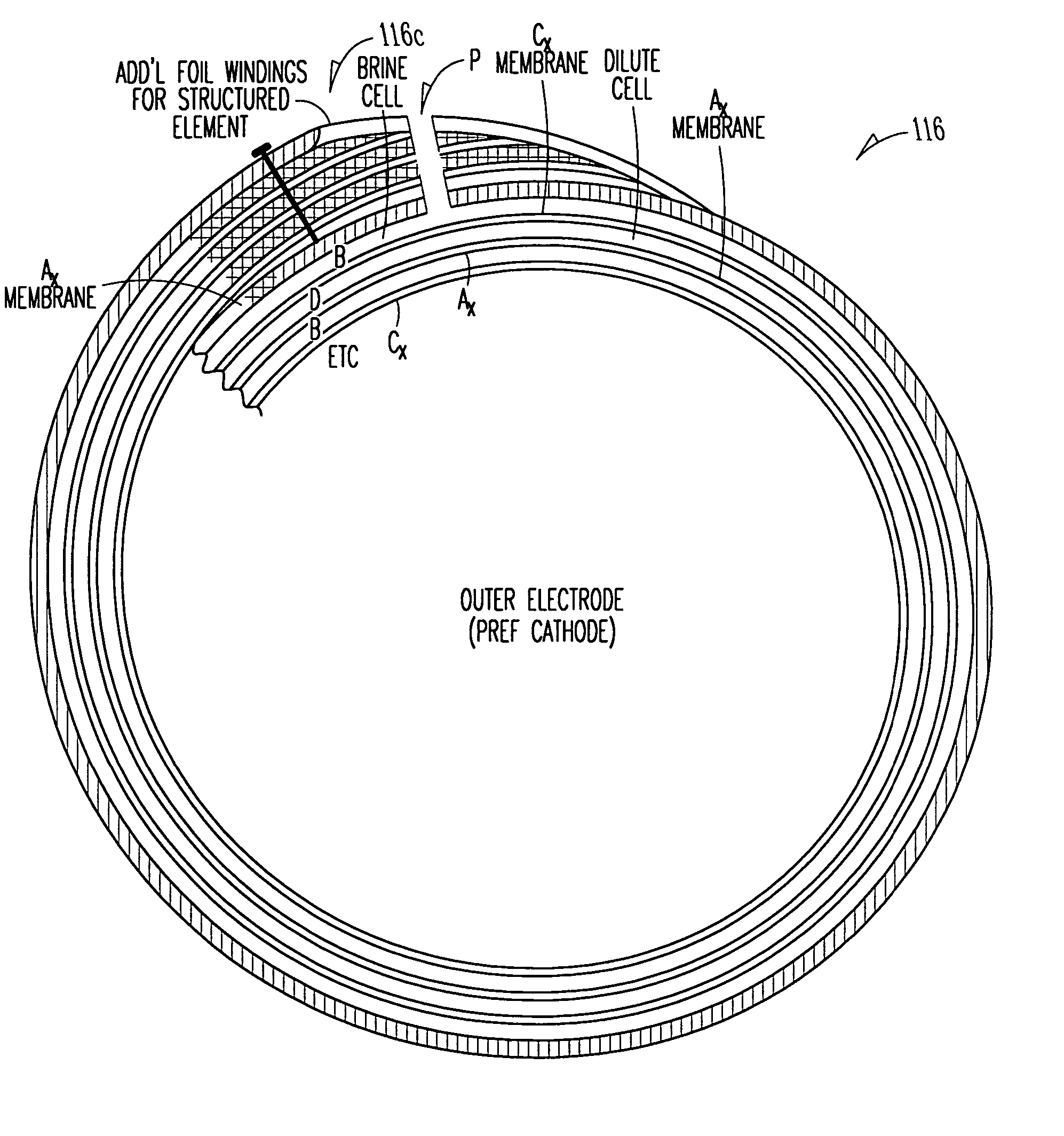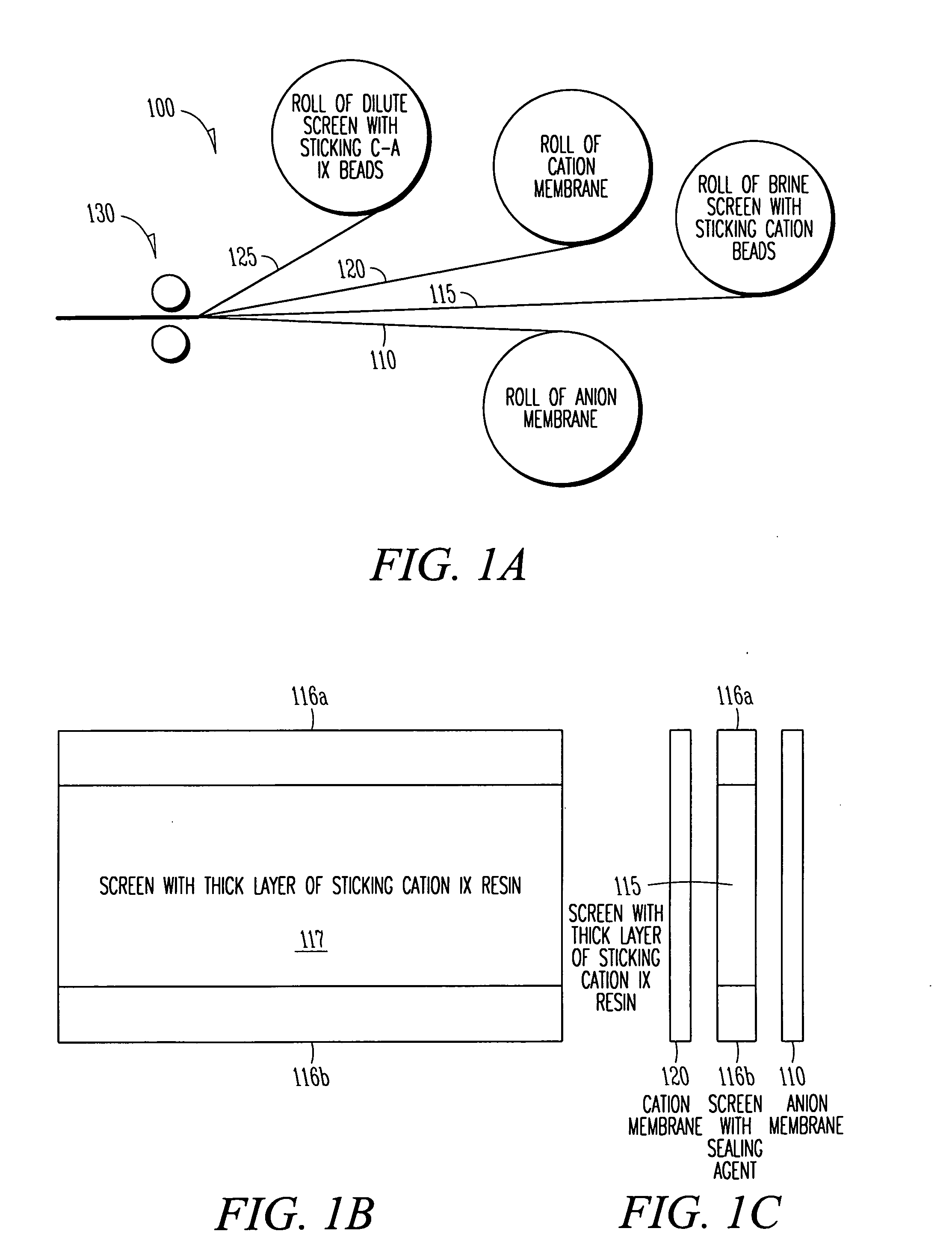Spiral electrodeionization device with uniform operating characteristics
- Summary
- Abstract
- Description
- Claims
- Application Information
AI Technical Summary
Benefits of technology
Problems solved by technology
Method used
Image
Examples
Embodiment Construction
[0044]FIG. 1 is a schematic plan view of a first embodiment 10 of a cylindrical EDI apparatus in accordance with the present invention, showing general layout of components. The EDI apparatus 10 includes a housing illustratively comprised of a bottom flange plate B, a top flange plate T and a cylindrical body C that together define a generally cylindrical vessel or fluid-confining enclosing chamber. A membrane roll 15, of which several examples are described below, is wound around a central core 12 within the housing. Illustratively, a membrane roll support 18, the structure of which may take various forms, supports the membrane roll. An inner electrode 14 surrounds the central core 12, and is coupled to a first current leader 14a for connection to an external power source, and an outer electrode 16, coupled to a second current leader 16a, substantially surrounds the membrane roll 15. The membrane roll is wound in a spiral in the annular space between the two electrodes 14, 16. With...
PUM
| Property | Measurement | Unit |
|---|---|---|
| Flow rate | aaaaa | aaaaa |
| Diameter | aaaaa | aaaaa |
| Circumference | aaaaa | aaaaa |
Abstract
Description
Claims
Application Information
 Login to View More
Login to View More - R&D
- Intellectual Property
- Life Sciences
- Materials
- Tech Scout
- Unparalleled Data Quality
- Higher Quality Content
- 60% Fewer Hallucinations
Browse by: Latest US Patents, China's latest patents, Technical Efficacy Thesaurus, Application Domain, Technology Topic, Popular Technical Reports.
© 2025 PatSnap. All rights reserved.Legal|Privacy policy|Modern Slavery Act Transparency Statement|Sitemap|About US| Contact US: help@patsnap.com



